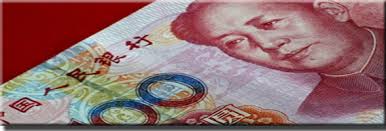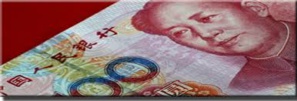Helped by healthy expansion in the world’s second-largest economy, Chinese first-half net profits surged by nearly a quarter, and therefore China Inc’s earnings are off to a roaring start to 2017 at first glance. Last year, the rise was a mere 6 percent.
The Shanghai index was pushed to its strongest levels in 20-months and the benchmark Hong Kong index to three-year highs by robust profits.
But analysts say that growth in debt, and that is too rapid for comfort, is fueling the corporate investment and M&A which is driving those earnings. Investors may also be given pause for thought by the unhealthy fundamentals in some sectors and frequent use of one-off gains to lift results.’
Growing much faster than the first half of 2016 when the rate was 7.5 percent, Reuters calculations show that the total debt at some 1,200 firms listed in Shanghai, Shenzhen and Hong Kong as of end-June grew 13 percent from a year earlier.
The firms that were selected for the survey was because they had reported earnings for at least two years in a row saw a rise of 12 percent in cash levels and profits were not used to retire debt in significant quantities over the period.
An in an indication that hopes of a broad deleveraging for Chinese firms, widely seen as having worrisome debt levels, seem premature, all in all, debt-to-equity ratios were little changed from last year.
“These earnings improvements are credit driven and I have doubts about the sustainability,” said Andrew Kemp Collier, managing director at independent research firm Orient Capital.
And the way in debt creation was led by China’s property developers and still many have kept borrowing.
While Sunac’s total borrowing jumped, up 60 percent to nearly $28 billion, this acquisition-hungry firm saw contract sales almost double and gross profit climb 86 percent.
“The picture is not as rosy as shown by rising earnings – credit is accumulating faster than nominal growth,” said Natixis Chief Economist Alicia Garcia Herrero, also noting that very short term debt is not captured in conventional leverage ratios.
Compared with a global average of 38 percent, an average of 68 percent of their liabilities in loans of less than 12 months were recorded by Chinese companies as disclosed by a study by Natixis.
Driven by resurgent exports and healthy retail sales - even if it is expected to start to lose some steam, growing by a faster-than-expected 6.9 percent in the first half, China’s economy has surprised experts with its resilience.
But strength in core businesses was not necessarily the cause of earnings gains in some sectors.
According a Fitch ratings report, while oil and gas production volumes fell 2 percent in the first half versus a year ago, oil majors saw revenue and profits gain, but this was due to a average 28 percent jump in oil prices.
But net interest margins in some smaller banks had contracted and some were struggling as these banks rely on short-term borrowings from other financial institutions even while China’s largest banks showed improvement. There was a slide of almost 17 percent in first-half operating income for Shengjing Bank.
the brunt of excessive borrowing would also have to be borne by the banking sector.
“Credit-fuelled excess investment is building up problems with assets that are likely to yield a poor return over time, and many are likely to turn into bad debts,” said Richard Jerram, chief economist at Bank of Singapore.
(Source:www.reuters.com)
The Shanghai index was pushed to its strongest levels in 20-months and the benchmark Hong Kong index to three-year highs by robust profits.
But analysts say that growth in debt, and that is too rapid for comfort, is fueling the corporate investment and M&A which is driving those earnings. Investors may also be given pause for thought by the unhealthy fundamentals in some sectors and frequent use of one-off gains to lift results.’
Growing much faster than the first half of 2016 when the rate was 7.5 percent, Reuters calculations show that the total debt at some 1,200 firms listed in Shanghai, Shenzhen and Hong Kong as of end-June grew 13 percent from a year earlier.
The firms that were selected for the survey was because they had reported earnings for at least two years in a row saw a rise of 12 percent in cash levels and profits were not used to retire debt in significant quantities over the period.
An in an indication that hopes of a broad deleveraging for Chinese firms, widely seen as having worrisome debt levels, seem premature, all in all, debt-to-equity ratios were little changed from last year.
“These earnings improvements are credit driven and I have doubts about the sustainability,” said Andrew Kemp Collier, managing director at independent research firm Orient Capital.
And the way in debt creation was led by China’s property developers and still many have kept borrowing.
While Sunac’s total borrowing jumped, up 60 percent to nearly $28 billion, this acquisition-hungry firm saw contract sales almost double and gross profit climb 86 percent.
“The picture is not as rosy as shown by rising earnings – credit is accumulating faster than nominal growth,” said Natixis Chief Economist Alicia Garcia Herrero, also noting that very short term debt is not captured in conventional leverage ratios.
Compared with a global average of 38 percent, an average of 68 percent of their liabilities in loans of less than 12 months were recorded by Chinese companies as disclosed by a study by Natixis.
Driven by resurgent exports and healthy retail sales - even if it is expected to start to lose some steam, growing by a faster-than-expected 6.9 percent in the first half, China’s economy has surprised experts with its resilience.
But strength in core businesses was not necessarily the cause of earnings gains in some sectors.
According a Fitch ratings report, while oil and gas production volumes fell 2 percent in the first half versus a year ago, oil majors saw revenue and profits gain, but this was due to a average 28 percent jump in oil prices.
But net interest margins in some smaller banks had contracted and some were struggling as these banks rely on short-term borrowings from other financial institutions even while China’s largest banks showed improvement. There was a slide of almost 17 percent in first-half operating income for Shengjing Bank.
the brunt of excessive borrowing would also have to be borne by the banking sector.
“Credit-fuelled excess investment is building up problems with assets that are likely to yield a poor return over time, and many are likely to turn into bad debts,” said Richard Jerram, chief economist at Bank of Singapore.
(Source:www.reuters.com)






